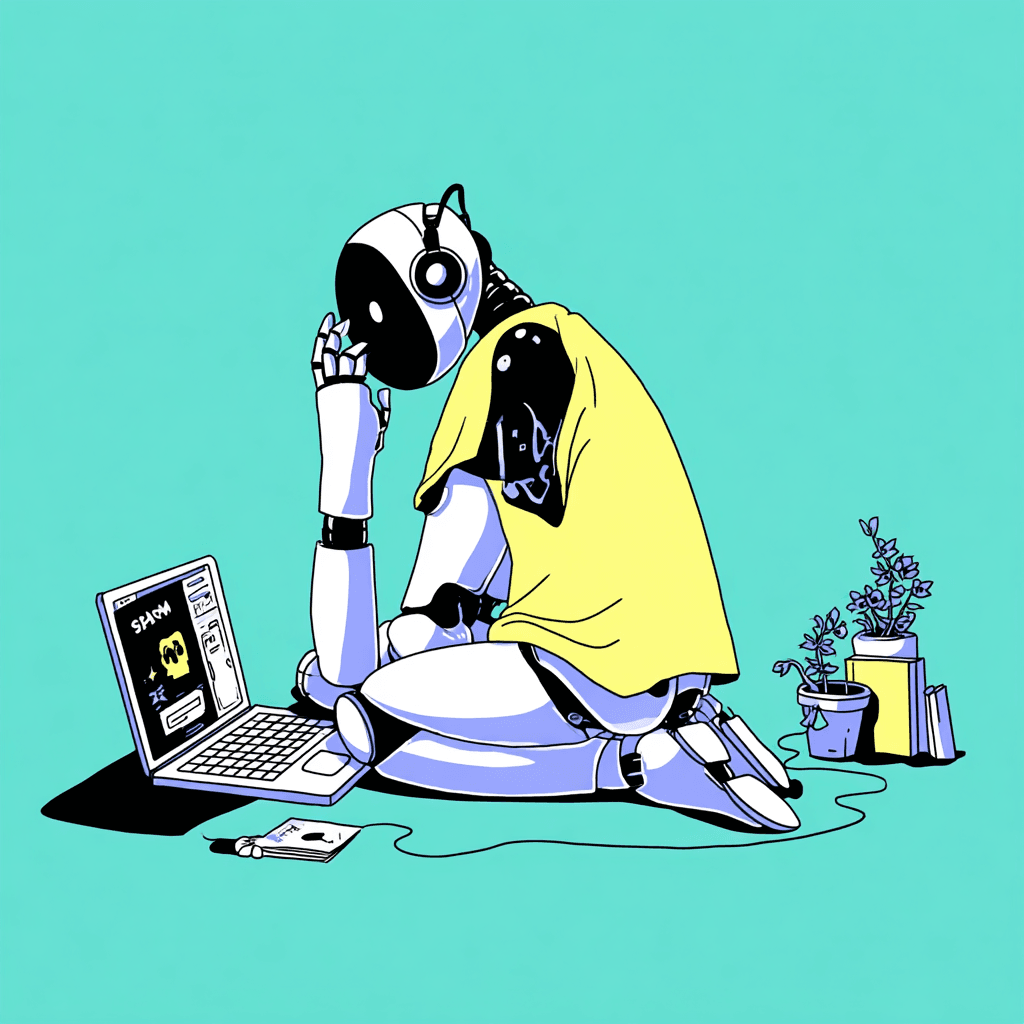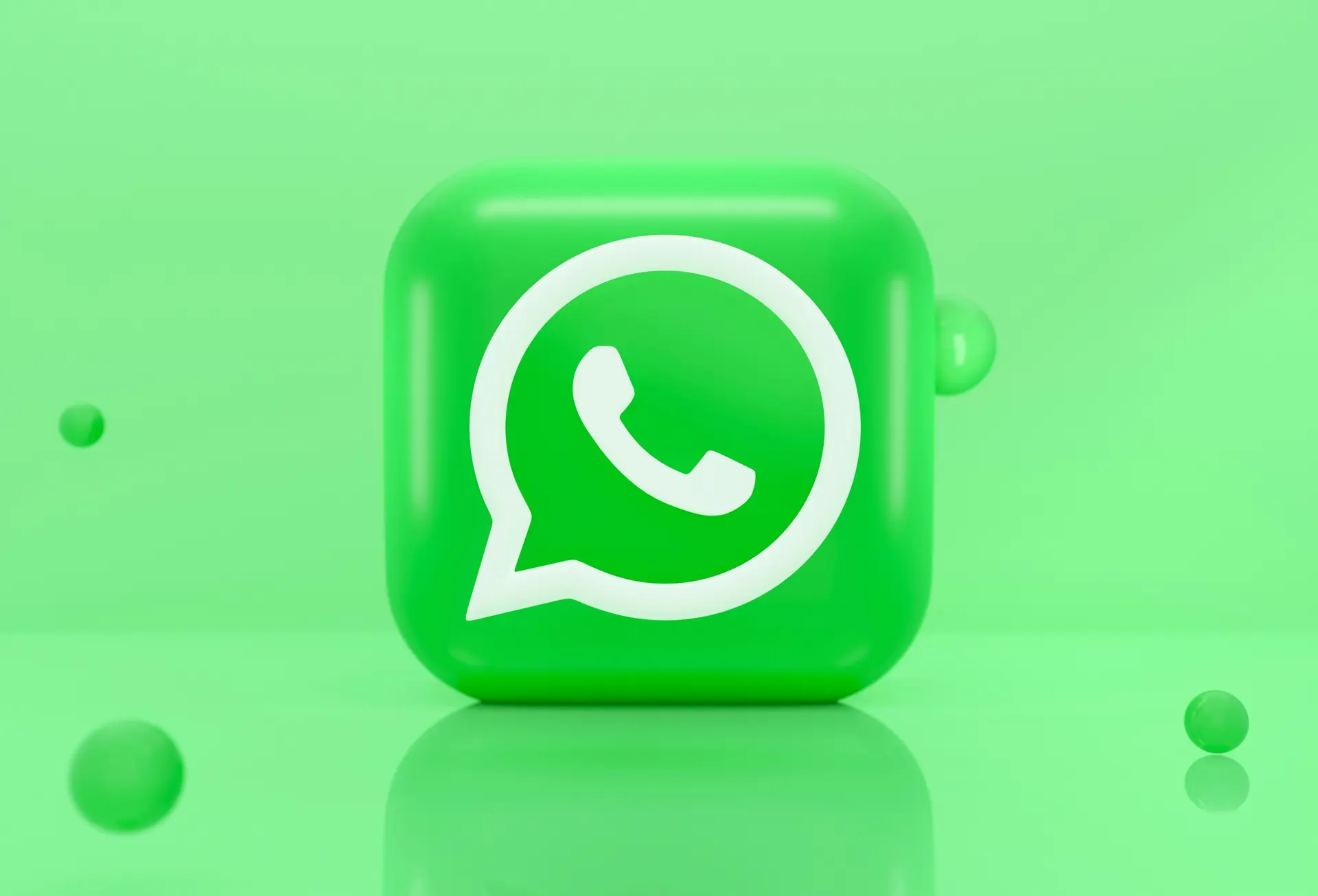Whether your company uses an AI chatbot or a live chat agent to answer users' questions, the conversation is always initiated by the customer. Customers express their interest in your offering 24/7, and WhatsApp bots capture these expressions, direct users to the relevant pages or announce when it will be possible to interact with employees again.
Where WhatsApp chatbots are helpful
Finding answers to frequently asked questions could be defined as the primary function of chatbots in WhatsApp or other channels.
However, an AI chatbot has much more to offer because it not only works with pre-prepared messages and texts, but can also access a predefined database to find the right answers for your customers.
Depending on the size of your company and the services or products you offer, chatbots can relieve the burden on employees and automate processes in your day-to-day business.
We present three of the most important areas of application here.You are sure to find ideas for your own WhatsApp chatbotin them.## Customer service chatbotsThe main area of application for WhatsApp chatbots today is in customer service. It is faster and more cost-effective for your company and also increases customer satisfaction.
Live chats with trained employees are a high cost factor if the conversation with the customer is only about questions of delivery or payment terms. The use of chatbots frees up live agents for more complicated customer inquiries.
Customer communication via AI-supported chatbots increases the possibilities for use in various conversations and ensures that many more customer inquiries can be handled simultaneously.
Chatbots also ensure that conversations always maintain the same tone and style, which exactly matches your company's guidelines and thus conveys a unified image throughout the customer journey.
Reservation bots
Bookings in hotels and restaurants are always subject to the same processes. The WhatsApp chatbot to support your booking system guides your guests through this process with little effort, but ready for any questions that may arise.
Your tool for additional services is elegantly integrated by your WhatsApp chatbot and increases sales. Special requests from guests and visitors can be asked for at an early stage and communicated directly to the responsible teams in your company.
WhatsApp and its chatbots are also constantly accessible during guests' stays in hotels, restaurants or other tourist facilities, to point out places of interest, special services or other highlights and to offer the customer the perfect service around the clock that they are looking for to help them relax.
All conversations are brought together via Chatarmin and displayed in your CRM system so that any knowledge can be used in a targeted manner for the next marketing campaign.
Optimizing recruiting with chatbots and HR processes
Human and artificial intelligence in combination can be found in many large companies today, including in their HR departments. Having applications processed via Messenger can further increase your options.
A chatbot can effectively guide new employees through the application process and help your HR department to provide only complete documents for further processing. An in-house chatbot for the HR department ensures short and targeted conversations when both parties are prepared. The processes in your company can also be optimized internally through the use of WhatsApp chatbots and not just in terms of external impact.
What types of WhatsApp bots are there?
Bots or chatbots, not only on WhatsApp, are designed to improve the workflow in your company. They can be used both internally and to retain customers.
The difference in chatbots lies in the type of messages they pass on to customers or other users. The content of the messages can be subject to rules or built on the basis of AI and predefined resources. We distinguish between the following bots.
Rule-based bots
The well-known virtual assistants have a selection of pre-prepared answers to relieve your customer service agents. In most cases, these are also answers with links to other pages of your company such as FAQ, delivery or payment conditions.
These assistants quickly reach the limits of their capabilities, but they can still welcome your customers into a conversation and forward them to a human behind the messenger, thus shortening waiting times for personal customer service.
AI-based bots
WhatsApp chatbots can have intelligent conversations with customers if they are provided with the appropriate resources for finding the answers.
Customer service is improved, its efficiency increased and, all in all, contact with the intelligent chatbot has given your sales team a new satisfied customer. No waiting times and meaningful answers at any time of day.
Application-oriented bots
Your WhatsApp chatbot can also combine both advantages. It can provide rule-based answers and engage in intelligent dialog with your customers on WhatsApp. This makes the bot even faster and more effective in its performance.
This hybrid form combines all the advantages that a chatbot on WhatsApp can offer your company.
What type of WhatsApp chatbot to use?
The range of functionalities of your WhatsApp chatbot also depends on the degree of automation of processes and contacts with your customers.
The likelihood that the WhatsApp chatbot can completely replace a human at the keyboard increases when the processes in sales and answering questions on your platform are always the same.
Requirements for creating a WhatsApp chatbot
No programming skills are required to create a chatbot. Chatbot providerscan be found all over the world, enabling you to quickly enter the world of improved communication with customers and other users.
We at Chatarmin are also always at your disposal to make your business even more successful with the help of WhatsApp chatbots.### What you really need:- WhatsApp Business API- WhatsApp Business App cannot integrate chatbots- Creativity for creating chatbots - give them a personality
- Core documents for artificial intelligence access - what chatbots need to learn
- Pre-prepared answers/messages - useful for starting conversations
Step-by-step guide to creating your first WhatsApp chatbot
You don't need any programming knowledge to successfully use a chatbot in your messaging service to answer questions or to accelerate the automation of sales processes.
In 7 steps, with the help of our guide, you'll have created a chatbot that works according to your rules:
1. Define the goal for your WhatsApp bot
Before you start your WhatsApp bot, you should clarify internally in your company what and which tasks it should perform.
To help you with these considerations, you can ask yourself and the relevant departments in your company the following questions:
- What should your chatbot be able to provide information about?
- Should your chatbot be able to conduct a dialog or just point users to certain benefits in your company and on your website?
- What is the prevailing tone of voice in a message from your company? How are customers and prospects addressed, for example in a social media channel?
- What should happen if your WhatsApp chatbot can't answer a customer question? How should a chatbot react when users point out an error in a description?
If you want to create WhatsApp chatbots for multiple departments, think through the possibilities of responses for each channel or employee group in your company individually.
2. Get access to the WhatsApp Business API
We assume that you already have this access, but if not, now is the time to switch from the WhatsApp Business app to the API. Chatarmin will be happy to show you the full potential of this tool.
Messaging apps are not automatically GDPR compliant. You can also find information for your company on our platform in this regard.
3. Choose a chatbot partner
As one of the leading partners of WhatsApp, we offer you the opportunity to build your bots yourself in just a few steps via our platform. These can then be easily integrated on the company's website.
Other providers for building WhatsApp bots include
- Botpress
- Yellow.ai
- WATI
- MessageBird
- Interakt
4. Find a suitable chatbot personality
A WhatsApp bot cannot have a specific name or almost human characteristics, but this is not possible because your users should know that they are talking to a WhatsApp bot.
The bot will get its image from the data you have stored. Your company's logo will be displayed and your brand will be presented again as a name.
Nevertheless, WhatsApp bots can introduce themselves to the customer at the beginning of the conversation or in the course of it. Videos or animations can be used to give a face to the technical counterpart.
To further emphasize the personality of the chatbot, it can use stickers or emojis to lighten the conversation. It is up to your company and its communication in general to decide what WhatsApp bots are allowed to do and what they can access in a message to users from the chat.
5. Develop the WhatsApp chatbot
In step 1 of the guide to creating a bot, you need to decide what kind of bot it should be. After that, the conversation sequences are designed.
In customer communication, you have probably noticed keywords. Based on these signal words, as they are known from conversations with a user in a chat, you can define dialogues and the sequence of messages in your chat.
In messaging, you work on the conversation partner in selection options or various options for the further response. To prevent these from looking like a dry exam question with a multiple-choice procedure, you work with stickers and emojis, as you have already integrated them into your marketing channels in many cases.
We will summarize the most important points in messaging for you to build your chatbot and its dialogues:
- Welcome message with opt-in consent
- Keywords to keep the conversation flowing
- Emojis or other media files to lighten the mood
- Option to forward to a human employee
6. Test the chatbot and adjust if necessary
Your WhatsApp bot is ready for use, but before you introduce it to future users, you should test it immediately after creating it.
When testing your bot, it is important to consider all the end devices that your company's customers could use to contact you. Of course, this messaging app can first and foremost be found on smartphones.
Remember that WhatsApp also offers desktop versions and that the messenger can be received differently on each screen size with its WhatsApp bot.
Don't test the WhatsApp bot alone or just with the employees who helped develop it. Encourage other departments in the company to join the messaging app and ask the WhatsApp bot questions.
The ultimate test for the WhatsApp bot and a great opportunity for marketing via Messenger is to introduce your new WhatsApp bots to regular customers and ask them to give you their feedback.
This will help you strengthen the connection with your customers and prospects across all channels. You can use the experiences from these applications to create a guide to help you revise your bot or your various bots.
7. Promote your WhatsApp chatbot
If the bot is approved, the ball is in the court of marketing. After all, your bot wants to be promoted by message.
You can also announce your bot as a new virtual employee via email and QR code. It is helpful if you have assigned a personality or a small story to your WhatsApp bot. You can tell this story via email or on social media to emphasize how the new virtual assistant can help you in the future!
Examples of successful WhatsApp chatbots
The guidelines for communication in your business are on the table and the connection between WhatsApp and the customer care software in the background has also been created.
Nevertheless, you are looking for examples of what could make your company's WhatsApp bot stand out? Our guide once again impressively illustrates the possibilities of WhatsApp bots.
The travel agent
One of the first industries to use chatbots was the tourism sector. Today, chatbots on travel sites point out additional services, ask for the exact number of people or provide information about cheaper alternatives.
The chatbot with background knowledge from the CRM can guide existing customers directly to their favorites and, on request, place the special requests from the last trip in the booking cart.
If travelers can't find the right hotel in their desired destination, there is a risk that they will cancel the booking. Your chatbot can recommend the neighboring region in its conversation with the guest because a hotel in the desired category can be booked there, and a rental car can be added at the same time.
The online receptionist
Receptionists are not only found as the person behind a counter in a hotel. Company entrances, doctors' offices and other businesses have their own employees to show customers and prospects their way through the corridors.
A chatbot on your company website, in your shop or for support takes on the same task. Your chatbot directs contacts to the relevant employees in live chat for specific customer questions or provides links to answers to the most common queries.
The reseller
Every entrepreneur with an online shop is familiar with the problem of abandoned shopping carts. A bot in WhatsApp chat can help to encourage the customer to complete their purchase after all.
Distraction is one of the most frequently mentioned reasons for abandoned shopping carts. The interested customer is still on your site, but distracted from their purchase by phone, work or messages. The chatbot can use follow-up questions to still make the sale without investing time in reminder emails and messages.
The technical possibilities now allow you to observe how and where your buyers move around on your website, where they get stuck and where they quickly click on. Use these insights for your chatbot in sales.
The WhatsApp Bot as a mechanic
There are industries in which the questions from users on the website or in telephone support are very specific. These questions range from bicycle settings to spare parts for the summer pavilion.
You can provide a chatbot in WhatsApp for precisely such customer concerns. It keeps the sales and support for sales free of customers who have already happily received their products but are struggling with assembly instructions or are looking for suitable spare parts.This way, you can improve customer satisfaction .
This chatbot is designed purely for technical matters and also advises end users when they have purchased and connected the wrong additional devices. After a convincing consultation, the customer can use their device or is referred back to support for questions regarding returns and delivery conditions for additional parts.






